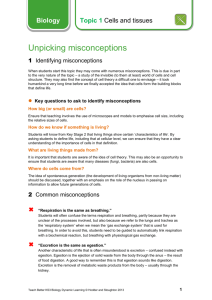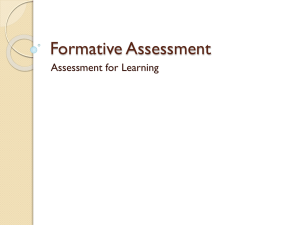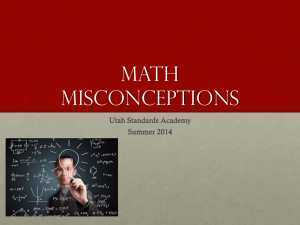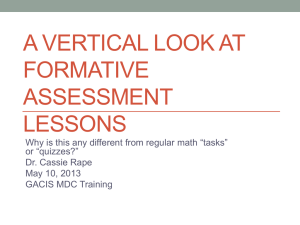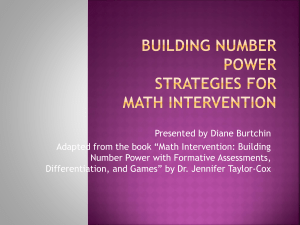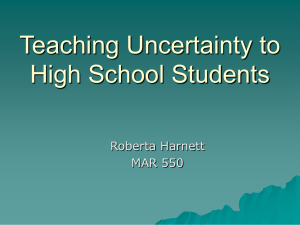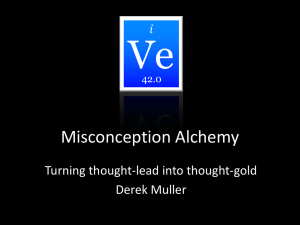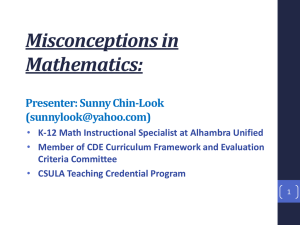Scientific Misconceptions in Learning
advertisement
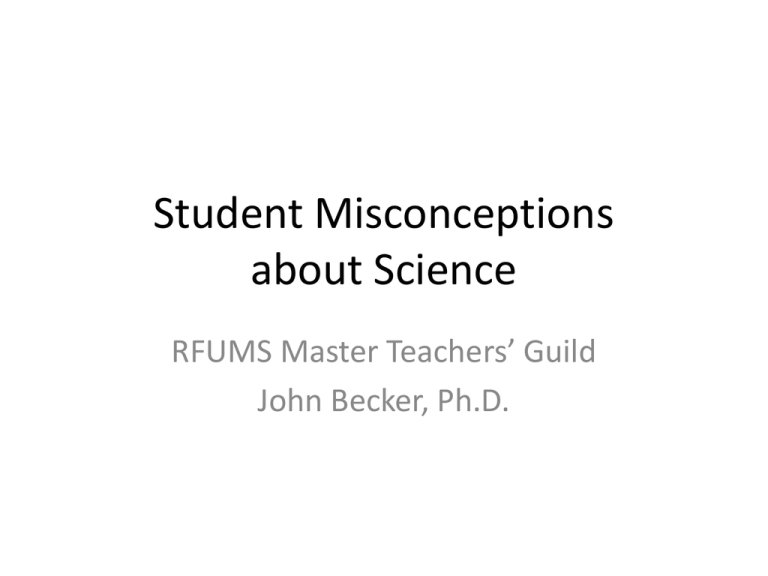
Student Misconceptions about Science RFUMS Master Teachers’ Guild John Becker, Ph.D. Learning Objectives Participants will: • Learn how to identify misconceptions that students hold • Identify the likely sources of the misconceptions • Learn what remedies can correct misconceptions Misconceptions about Learning From Faculty Focus, January 29, 2014: 1. Learning is fast 2. Knowledge is composed of isolated facts 3. Being good at a subject is a matter of inborn talent rather than hard work 4. I’m really good at multi-tasking, especially during class or studying. SCIENCE MISCONCEPTIONS • Flawed mental models, not just missing facts. – Sun revolves around the earth? • One definition (Michael, 1998): – An incorrect model for a phenomenon regardless of its possible origin. • Published examples from: physics, chemistry, neuroscience, psychology, biochemistry, exercise science, heart failure, etc. Some hot (and cold) misconceptions from physics 1. Everything contracts in the cold – Fill a water glass and put it in your freezer 2. Everything expands in the heat – Plate-with-a-hole problem Plate-with-a-hole problem • Put a metal plate with a hole in the center into an oven and heat it. • What happens to the hole? • Take 1-2 minutes by yourself A B C You are not alone • Eric Mazur thoroughly covered heat in Harvard’s freshman Physics lecture course. • But, many students got it wrong, as did Harvard professors, as did physiologists at a meeting. Group Activity Discuss among yourselves for 3-4 minutes – And, imagine metal molecules as people standing in a circle, who want to get as far away from neighbors as possible. Group Activity, cont. C How to find misconceptions • Multiple choice exams (over several years) – PrepU exam bank has “misconception alerts” – Formative pre-tests (Lazarowitz, 2005) • Office visits/tutor sessions • Ask for reasons during lecture (Socratic) – Direct interlocution or indirect with clickers • Educational literature in your profession Sources of misconceptions • Learned in other courses (K-16) • Grounded: not from other education – Intuitive ideas from everyday life – Even observing their own body does not help dissuade them • Teleology: “the body needs to…” Sources that we can control • Sometimes it is language: • • • • • Absorption ≠ Reabsorption ≠ Resorption Two renal thresholds (Cheng, 2012) Missing adjective: arterial blood pressure “Elastic” in physics vs everyday language “positive feedback” in physiology vs pop psychology • Sometimes it is poor analogies – Arterial vs venous compliance • In the future, Virtual Reality programs may apply reductionism to complex biological problems (Richardson, 2011) Compliance • From physiology textbooks: venous compliance is 20X that of arterial compliance. • Compliance = Δvolume/Δ pressure – (how easy it is to fill an elastic container) • Dr. Becker’s bad 2-D analogy: thin and thick rubber bands – But venous grafts to replace blocked coronary arteries must be tough. – A better 2-D analogy: area within a circle vs. area within an ellipse. Shapes Normal vein Vein when blood is stored in an organ (e.g., depend your hand) • The “fabric” of arteries and veins are similar, but circles have bigger areas than ellipses of the same circumferences • And in 3-D, cylindrical cans hold more volume than oval cans • Compliance = Δvolume/Δ pressure – (how easy it is to fill an elastic container) Sometimes it is figures or charts • The terminology of the basic physiological concept of “homeostasis” is not used consistently across textbooks (and sometimes within one textbook), especially in figures (Michael, 2013) – e.g. see-saw in a feedback loop drawing may lead students to misconceive that homeostasis only operates when there is an imbalance Homeostasis Drawing Control Center Receptor/ Sensor Effector Variable in homeostasis • Does the system shut down when there is balance? • Where is the “set point”? • “Negative feedback” is not explicit Based on Michael 2013 Sometimes it is graphs • Some textbooks use graphs from experiments, but students may think the graph explains an observation of an unprovoked situation. Stroke Volume in Experiments & Exercise Silverthorn Physiological Examples • Cardiac Output = Heart Rate X Stroke Volume – H.R. goes up in exercise, but what about stroke volume? – Many students think it goes down or stays the same – Analysis from research (Michael, 1998): “Cardiac output must be kept constant” – Does this come from emphasis on feedback loops? • But the variable held constant is blood pressure, not cardiac output. – Does this come from the previous figure? • Others: right & left cardiac output; pulse vs blood velocities; resistances in parallel (Palizvan, 2013) Respiratory • Minute Ventilation = Resp. Rate X Tidal Volume – R.R. goes up in exercise, but what about VT? – Similar misconception: VT either stays the same or drops to keep ventilation per minute constant – Or, not enough time to fill the lungs at high rates – In this case, students ignore what they can observe after running up the stairs (deeper & faster breathing) What to do? • Re-lecturing does not work: – Misconceptions persist across tests and across courses (Michael, 1998; Silverthorn, 2002) – Eric Mazur abandoned lecturing Remedies • Sometimes labs or demonstrations can help, esp. if students are asked to predict • Sometimes making students aware that this concept is often misconceived: – Teach to misconceptions “targeted instruction” (Christensen, 2008) – Let your tutors know, too • Explain the components & limitations of analogies (Broom 2010) • “Interventions” (Leinonen, 2013) • Hints & Peer Interaction (e.g. discussion among peers about the hole problem) • Other Active Teaching methods – Caveat: some students don’t want active methods Informal Survey at RFUMS Dr. Oblinger: Hair & fingernails grow after death. • The skin dries and shrinks away from the bases of hairs and nails, giving the appearance of growth. DISCUSSION 1. Share your pet misconception. 2. Ideas about remedies? 3. Does it matter?



